What’s Up?
The first day of the private IPT was massively successful. The weather forecast was calling for a NW wind and partly sunny for St. Pete. After consulting with Sigmon and Sadako, we decided to drive an hour to Lakeland and hope for the American White Pelicans. Though the forecast for Lakeland was for clouds and a wind from the northwest, it turned out to be sunny and clear with a breeeze from the east. And oh, the pelicans were there in force. We shot until 10:00am and then headed back to our AirBnB. Our afternoon was unexpectedly great as we wound up surrounded by about a dozen species of plovers and sandpipers including two cooperative Marbled Godwit. A fishing Snowy Egret visited and an Osprey dived and caught a big fish right in front of us.
After lunch at Neptune Grill in Gulfport, we did a long image review session. Dinner at the AirBnb was scrumptious baked chicken and a glorious salad prepared by Chef Morris. Sedaka was the sous chef, and she and Sigmon cleaned up the huge mess that I made and did all the dishes.
Today is Thursday 11 January 2024. We just arrived at DeSoto for Day 2. Wherever you are and whatever you choose to do, I hope that you too have a great day.
Please remember to use the B&H and Amazon links that are found on most blog pages and to use the BIRDSASART discount code at checkout when purchasing your new gear from Bedfords to get 3% back on your credit card and enjoy free second-day air FedEx. Please, also, consider joining a BAA IPT. You will be amazed at how much you will learn!
You can find some great photo accessories (and necessities, like surf booties!) on Amazon by clicking on the Stuff tab on the orange/yellow menu bar above. On a related note, it would be extremely helpful if blog-folks who, like me, spend too much money on Amazon, would get in the habit of clicking on the Amazon logo link on the right side of each blog post when they shop online. As you might expect, doing so will not cost you a single penny, but would be appreciated tremendously by yours truly. And doing so works seamlessly with your Amazon Prime account.
If an item — a Delkin flash card, or a tripod head — for example, that is available from B&H and/or Bedfords, is also available in the BAA Online Store, it would be great, and greatly appreciated, if you would opt to purchase from us. We will match any price. Please remember also to use my B&H affiliate links or to earn 3% cash back at Bedfords by using the BIRDSASART discount code at checkout for your major gear purchases. Doing either often earns you free guides and/or discounts. And always earns my great appreciation.
Save 15%!
If you’d like to try out a new lens, or if you need a lens for a specific trip or project (or for an IPT), LensRentals.com is the only way to go. To save 15%, simply click on the logo link above, arrange for your rental, and type in BIRDSASART15. If you type the gear you are looking for in the search box, it will pop right up. LensRentals.com offers affordable insurance. You can decline it, opt for LensCap: Damage Only, or select LensCap: Damage & Theft. Then hit PROCEED TO CHECKOUT. After you enter all of your info but before completing your order, be sure to scroll down to Promo Code box and enter the BIRDSASART15 code to save 15%.
I checked on renting a Sony FE 70-200mm f/2.8 GM OSS II lens for a week. The cost is only $122.00. LensCap: Damage Only coverage can be added for a very low $18.00. Going with LensCap: Damage & Theft would be $27.00. The shipping charge varies. They offer an interesting program called Lensrentals HD. By signing up for this shipping discount program ($99.00/year), you’ll get free Standard Shipping on all the orders you place.
Renting a Sony 600mm f/4 GM OSS lens for a week will cost you $536.00. The two coverage options come in at $76.00 or $114.00. Less your 15% discount when you enter the BIRDSASART15 code into the Promo Code box at checkout and enter the BIRDSASART15 codeine the Promo Code box at checkout to save 15%.
Remember, to save the 15% on your rental you must start your search by clicking on the logo above, or on this link: LensRentals.com
B&H Simplified
To ensure that I get credit for your B&H purchases, you can always click here. The tracking is invisible but greatly appreciated. And, you can use your PayBoo card. You must use the website to order. B&H will reopen on Fri April 14. Thanking me for the past 4000 educational blog posts could not be any easier and will not cost you one penny. Please shoot me your B&H receipt for major purchases.
Bedfords Simplified
Click here to start your search. Choose standard shipping, and when you get to the payment page, enter BIRDSASART in the discount code box and hit apply. You will be upgraded to free second day air Fed-Ex and receive 3% cash back on your credit card once your stuff ships. Either is greatly appreciated by yours truly.
B&H
Many folks have written recently stating that they purchased a Sony a1 from B&H and would like their free membership in the Sony 1 Info and Updates Group, a $150.00 value. When I check my affiliate account, their orders have not been there. When I let them know that they get credit for B&H purchases only if they use one of the many B&H affiliate links on the blog or begin their searches with this link, they are always disappointed. If in doubt, please contact me via e-mail and request a BH link. I am always glad to help and to guide you to the right gear.
Bedfords Amazing BAA Discount Policy
Folks who have fallen in love with Bedfords can now use the BIRDSASART coupon code at checkout to enjoy a post-purchase, 3% off-statement credit (excluding taxes and shipping charges) on orders paid with a credit card. The 3% credit will be refunded to the card you used for your purchase. Be sure, also, to check the box for free shipping to enjoy free Second Day Air Fed-Ex. This offer does not apply to purchases of Classes, Gift Cards, prior purchases.
Visit the Bedfords website here, shoot Steve Elkins an e-mail, or text him on his cell phone at (479) 381-2592.
Important Note
As an Amazon Associate, I earn a small percentage when you purchase from Amazon after using any of the Amazon links on the blog. My affiliate link work fine with Amazon Prime and using it will not cost you a single cent. Huge thanks, BTW 🙂


Gear Questions and Advice
Too many folks attending BAA IPTs and dozens of photographers whom I see in the field and on BPN, are — out of ignorance — using the wrong gear, especially when it comes to tripods and more especially, tripod heads. And the same is true in spades when ordering new camera bodies or lenses. My advice will often save you some serious money and may help you avoid making a seriously bad choice. Please know that I am always glad to answer your gear questions via e-mail. If you are desperate, you can try me on my cell at 863-221-2372. Please leave a message and shoot me a text if I do not pick up.
|
|
|
This image was created on 28 March 2023 on a Fort DeSoto IPT. Seated on damp sand I used the foot-pod technique with the handheld Sony FE 400mm f/2.8 GM OSS lens and The One, the Sony Alpha 1 Mirrorless Digital Camera). The exposure was determined via Zebra technology with ISO on the Thumb Dial. ISO 800. 1/2000 sec. at f/2.8 (wide open) in Manual mode. When evaluated in RawDigger, the raw file brightness was determined to be dead-solid perfect (ho hum). AWB at 8:07:35am on a partly overcast morning. Tracking: Expand Spot/AF-C with Bird Face/Eye detection enabled performed to perfection. Be sure to click on the image to enjoy a high-res version. Image #1: Little Blue Heron, molting juvenile hunting |
Juvenile Little Blue Heron
Young Little Blue Herons are often mistaken for Snowy Egrets by those not paying attention to detail. The first clue is the GISS (general impression, size, and shape); little blues are stockier and not as dainty as snowies and the bill is stouter as well. Fresh juveniles are pretty much white but not as bright white as snowies. In addition to the slightly thicker bill, the bills of juvie LBHs are light grayish blue at the base becoming duskier and darker toward the distal half. The legs range from yellow to greenish yellow. The bill and legs of Snowy Egret are black except for the young ones. Like LBHE chicks, SNEGs are born with legs that range from yellow to greenish yellow. After a few months the legs of SNEG become black with a yellow stripe on the back of the leg. As they approach their first birthday, the began to grow in some blue feathers. Fairly soon they become splotchy (pied).
Note: The acronym GISS was first used in WWII to identify military aircraft. Birdwatchers also use JIZZ to mean the same thing. Without getting into the debate of JIZZ vs GISS, JIZZ seems to be the winner; it was first used to describe birds in 1921. Simply put, if you see someone you know well in a crowd at a great distance you are often quite sure of who they are. Over time, that’ how it works with bird ID 🙂
|
|
|
This image of the same bird was also created on 28 March 2023 on a Fort DeSoto IPT. Seated on damp sand I used the knee-pod technique with the handheld Sony FE 400mm f/2.8 GM OSS lens Tracking: Upper center Zone/AF-C with Bird Face/Eye detection enabled performed to perfection. Be sure to click on the image to enjoy a high-res version. Image #2: Little Blue Heron, molting juvenile with tiny fiddler crab |
Follow Attractive Subjects and Then Work Them Hard
Some bird photographers are happy to go out and make a few images of a given species and then move on to something else. I have long advised folks that once they find a nice subject that they stay with it and work hard to create a variety of images depicting different behaviors and different image designs. Always keep the basics in mind. If you are photographing the whole bird, consider whether it would do best in a horizontal frame or a vertical one. Always be mindful of the background when choosing your perspective. When the sun is shining, it is generally best to stay within 10 or 15 degrees of sun angle, the direction that your shadow is pointing. If something in the background is worth including in the frame, be sure to include the whole thing with at least a small border around it.
If you are using a zoom lens, you can zoom in or out to vary the size of the subject. If you are using a fixed focal length lens, you must use human zoomin’ by moving farther or closer to the bird. In that same vein, be sure to check that you are not clipping off a head, feet, or a wing tip.
|
|
|
This image of the same bird was also created on 28 March 2023 on a Fort DeSoto IPT. Seated on damp sand I again used the knee-pod technique with the handheld Sony FE 400mm f/2.8 GM OSS lens Tracking: Upper left Zone/AF-C with Bird Face/Eye detection enabled performed to perfection. Be sure to click on the image to enjoy a high-res version. Image #3: Little Blue Heron, molting juvenile on beach |
The Situation
We began photographing this bird (and many others) in the long, skinny pool to the left of the parking lot at North Beach. I followed it as it flew off to the south east and saw it land near the entrance to Hidden Lagoon. When the action slowed, I took the group over to the lagoon where it hunted for Fiddler Crabs.
Your Call
Which of today’s featured images is your favorite? Be so kind as to leave a comment letting us know why you made your choice.
Unsolicited via e-mail from Pete Myers
I just spent 4 days in the field in a graduate course in bird photography taught by Artie Morris at Fort DeSoto. After almost 50 years of experience pointing cameras at birds from the Arctic to Tierra del Fuego, New Zealand and beyond, I thought I was good enough. But what I learned from Artie in just four days has taken me to a whole new level. As he aptly puts it, “birds as art,” not simply bird photography. One of those 4 days was the most satisfying I’d ever experienced, anywhere. The IPT left me euphoric about what I’d learned, and frighteningly committed to recreating my portfolio with the techniques and insights he taught me.
Unsolicited via e-mail from IPT veteran Eugen Dolan
Arthur, Thank you very much for your overwhelming infectious enthusiasm that helped get me up on some mornings. Also, your ability to express yourself- and explain in great detail why you like or may not like an image – was very helpful in allowing me to better analyze my images. Eugen
Via e-mail from Jim Miller
I can’t stop thinking about how much fun the DeSoto IPT was, and how much I learned. There were so many things that suddenly made perfect sense after I had been confused for so long. Thank you very much for the wonderful trip, and for being a great teacher. As I worked through the raw files last week, I realized what a fantastic lens the 600 IS is. Thanks for the rental! Maybe someday I will be able to afford one. Some images for critique are attached. Thank you again, Artie. It was really wonderful to be with you and learn from you.
Via e-mail from Lee Sommie
I want to thank you for making the Fort DeSoto IPT; it was a fun and educational experience for me. I truly did not want the adventure to end. I now look through the viewfinder with an artist’s mindset. And the real bonus was making new friends with fellow students. Thank you for sharing your knowledge and enthusiasm for wildlife photography. I had a great time with you and look forward to more adventures on future IPTs.
Via e-mail from Muhammad Arif
I had a great time at Fort De Soto. Thank you for all the instruction, for your help and pointers; my photography has already improved tremendously, and I’ve never made such good bird photos before. I wish I could’ve joined you on Monday and Tuesday morning as well, but work got in the way. It was also nice meeting the folks on the IPT. Thanks again for everything and I hope to join you at a future IPT sometime again.
|
|
|
Be sure to click on the composite to view a larger, high-res version. All images from 2023 Fort DeSoto Spring IPTs. Clockwise from upper left around to center: Snowy Egret in breeding plumage with crest blowing; Osprey striking; Brown Pelican sunrise silhouette; Royal Terns copulating; Marbled Godwit striding; Royal Tern courtship feeding; Snowy Egret hunting; Laughing Gull in breeding plumage along flight; Reddish Egret in flight with killifish. |
The 2024 Spring Fort DeSoto Instructional Photo Tours (IPTs)
Spring Fort DeSoto IPT #1: THURS 14 March through the morning session on SUN 17 March, 2024. 3 1/2 Days: $1899.00 includes three working brunches. Limit six photographers.
Spring Fort DeSoto IPT #2: Wednesday 8 May through the morning session on SAT 11 May 2024. 3 1/2 Days: $1899.00 includes three working brunches. Limit six photographers/Openings: 5.
Fort DeSoto, located just south of St. Petersburg, FL, is a mecca for terns and gulls, wading birds, and shorebirds in springtime. Though DeSoto can be great any day of the year, spring is my very favorite time to be there as many of the birds will be in full breeding plumage. Simply put, DeSoto is the new Ding Darling. Migrant shorebirds are in abundance, and many are exceedingly tame. We should have great chances on Royal and Sandwich Terns and both white- and dark-morph Reddish Egrets. Great Egret, Snowy Egret, Great Blue Heron, Tricolored Heron, and White Ibis are easy as well and we will almost surely come up with a tame Yellow-crowned Night-Heron or two along with some American Oystercatchers. We will enjoy lots of great flight photography, especially with the Brown Pelicans.
|
|
|
Fort DeSoto in spring is rife with tame birds, many in full breeding plumage. Click on the composite to enjoy a larger version. Clockwise from upper left around to center: Laughing Gull landing on head of Brown Pelican, Laughing Gull in flight, Reddish Egret sunrise silhouette, Great Blue Heron with needlefish, Yellow-crowned Night Heron with ghost crab, Roseate Spoonbill, Sanderling in breeding plumage, and white morph Reddish Egret in glorious breeding plumage. |
In Addition!
We should also get to photograph a variety of other shorebirds including Black-bellied, Semipalmated, Wilson’s, Snowy, and Piping Plovers, Willet, Dunlin, Short-billed Dowitcher, Marbled Godwit, and most especially, Red Knot. On the May trip, many of the shorebirds will be in their handsome breeding plumages. In spring the T-shaped peninsula and the newly formed sandbar, Outback Key, are literally packed with avian treasures.
With just a bit of luck, we may get to photograph one of Florida’s most desirable species: Roseate Spoonbill. And we will surely get to do some Brown Pelican flight photography. With luck, they will have Laughing Gulls landing on their heads. And though not guaranteed, Wood Stork might well be expected. And we will be on the lookout for a migrant passerine fallout in the event of a thunderstorm or two. I almost forgot to mention — Laughing Gulls in breeding plumage are to die for!
You do NOT need a fast super-telephoto lens to do this trip!
|
|
|
Again, Fort DeSoto in spring is rife with tame birds, most in breeding plumage. Click on the composite to enjoy a larger version. Clockwise from upper left around to center: Laughing Gull in flight, Yellow-crowned Night-Heron, Sandwich Terns copulating, Roseate Spoonbill, Great Egret with reflection, breeding plumage Short-billed Dowitcher, American Oystercatcher, Royal Tern, white morph Reddish Egret, and Snowy Egret in marsh. |
What You Will Learn on a DeSoto IPT
- 1- The basics and fine points of digital exposure; how to get the right exposure every time after making a single test exposure (or before if you are using SONY gear).
- 2- How and why to work in Manual mode (even if you’re scared of it).
- 3- How to approach free and wild birds without disturbing them.
- 4- Lots about bird behavior and how to use that knowledge to help you create better images.
- 5- To age and identify many species of shorebirds including various sandpipers, plovers, dowitchers, and possibly yellowlegs.
- 6- To spot good situations and to choose the best perspective.
- 7- To see, evaluate, and understand the light.
- 8- To design pleasing images by mastering your camera’s AF system.
- 9- And perhaps most importantly, to evaluate wind and sky conditions and understand how they affect bird photography.
- 10- More than you could ever imagine.
|
|
|
Yes, Fort DeSoto in spring is rife with tame birds, most in breeding plumage. Click on the composite to enjoy a larger version. Clockwise from upper left around to center: breeding plumage Dunlin, dark morph Reddish Egret displaying, Laughing Gull vertical front-end portrait, Laughing Gull with prey item, landing on head of Brown Pelican, breeding plumage Royal Tern displaying, Royal Terns — pre-copulatory stance, Laughing Gulls copulating, Laughing Gull head portrait, breeding plumage Sandwich Tern with fish, and a rare treat, a breeding plumage White-rumped Sandpiper. |
The Details
Morning sessions will run two and one-half to three hours; afternoon sessions about two. There is never a set schedule on an IPT — we adapt to the conditions. On cloudy mornings with the right wind, we may opt to photograph till noon and skip the afternoon session. That especially when the afternoon weather is looking iffy. We may opt to visit a great North Tampa rookery if conditions warrant that.
There will be a Photoshop/Image Review session during and after brunch (included) each of the three full days. That will be followed by Instructor Nap Time. Each of these IPTs will run with only a single registrant as I do not like disappointing anyone. The best airport is Tampa (TPA). Once you register, you will receive an e-mail with lodging information. Do know that it is always best if IPT folks stay in the same general area (rather than at home or at a friend’s place a good distance away). For folks who register soon, the is an excellent chance that we can share an AirBnb to reduce lodging and meal costs and maximize your learning opportunities.
|
|
|
You got it by now! Fort DeSoto in spring is rife with tame birds, most in breeding plumage. Click on the composite to enjoy a larger version. Clockwise from upper left around to center: Roseate Spoonbill, immature Brown Pelican in flight, the heron/egret hybrid, American Oystercatcher feeding, immature Royal Tern on railing, Great Egret morning silhouette, Black Skimmer in surf, and underside head portrait of Great Blue Heron. |
More INFO
Folks attending this IPT will be out in the field as early as possible and stay out late to take advantage of sunset colors. Doing so will often present unique photographic opportunities, opportunities that will be missed by those who need their beauty rest and those who need to get home for a proper dinner. I really love it when I am leaving the beach at 9:30am on a sunny morning after a great session just as a carful or two of well-rested photographers are arriving … We will be getting wet.
Your non-refundable $599 deposit is due now. Credit cards are OK for that. You can register by calling Jim or Jennifer during weekday business hours at 863-692-0906 with a credit card in hand. Once you leave a deposit, you will receive an e-mail with your balance statement and instructions for sending your balance check three months before the trip begins. If you wish to pay in full right off the bat, you can make your check out to BIRDS AS ART and send it via US mail here: BIRDS AS ART, PO BOX 7245, Indian Lake Estates, FL 33855. You will receive a confirmation e-mail with detailed instructions, and clothing and gear advice two months before the trip. Please shoot me an e-mail if you plan to register or if you have any questions.
IPT veterans and couples or friends signing up together may e-mail for discount information. If you have any questions, or are good to go for one of these great trips, please let me know via e-mail or give me a call on my cell phone at 863-221-2372 for more info.
Typos
With all blog posts, feel free to e-mail or to leave a comment regarding any typos or errors.


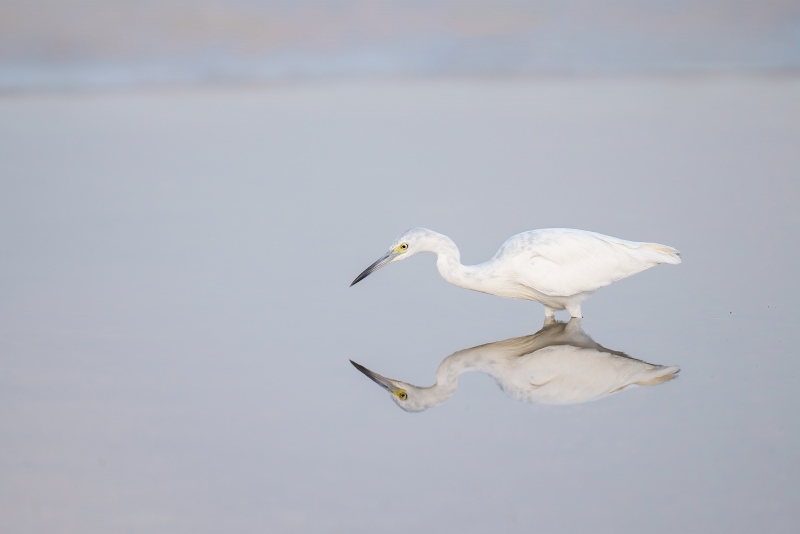
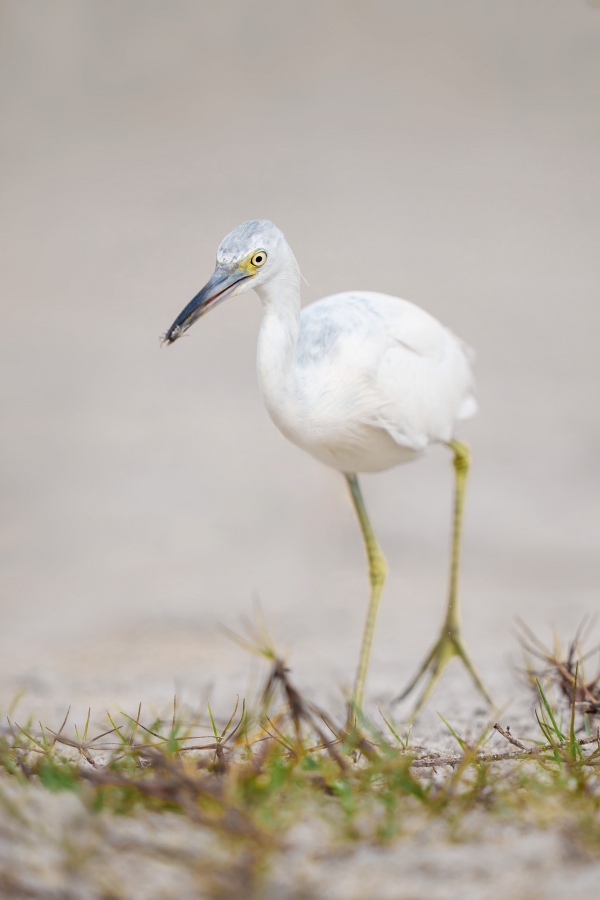
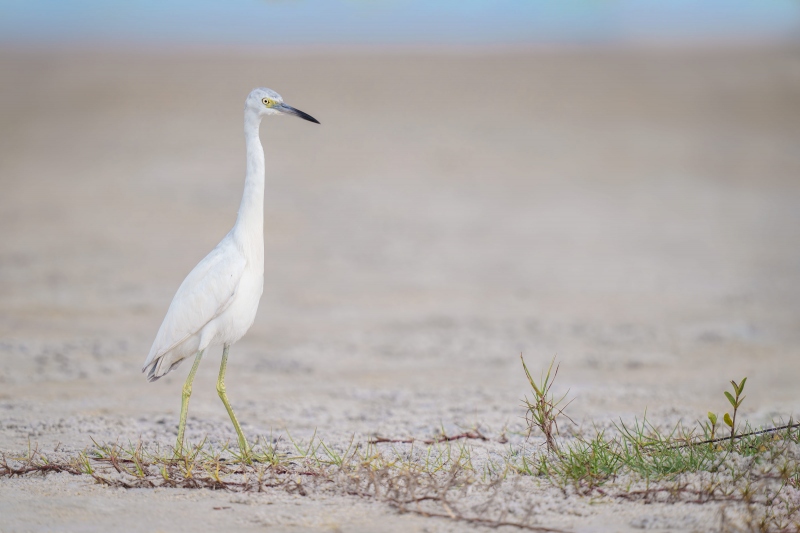
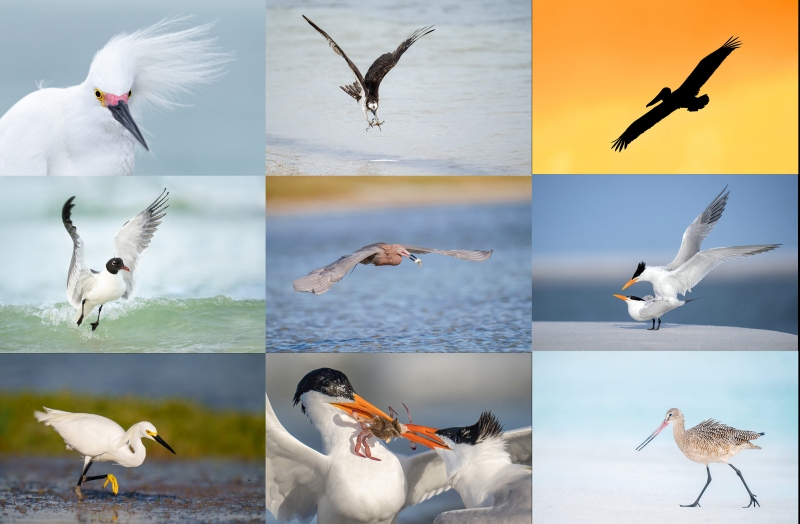
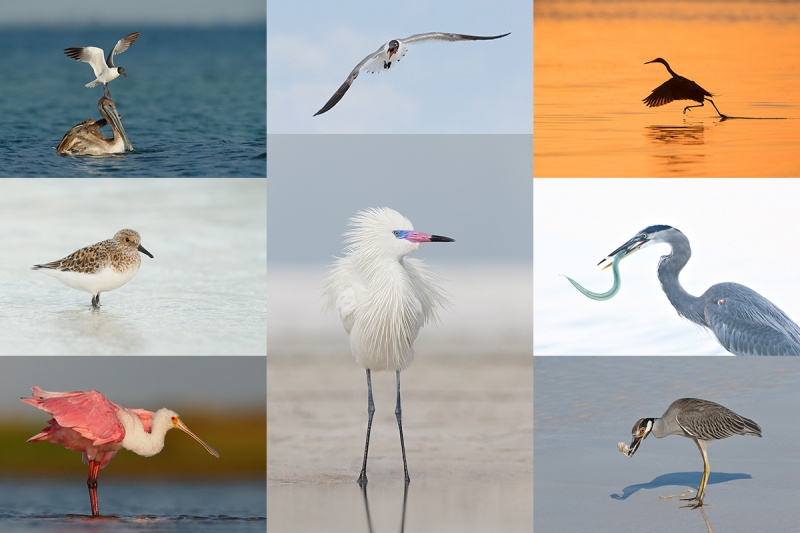
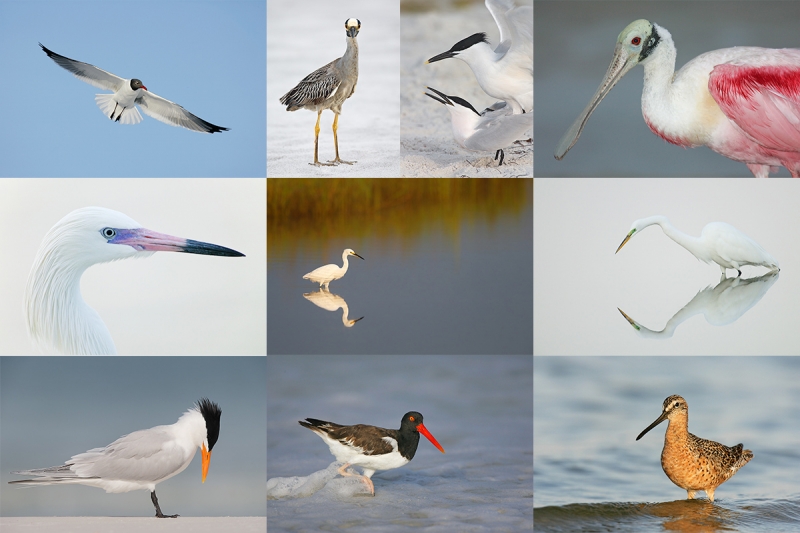
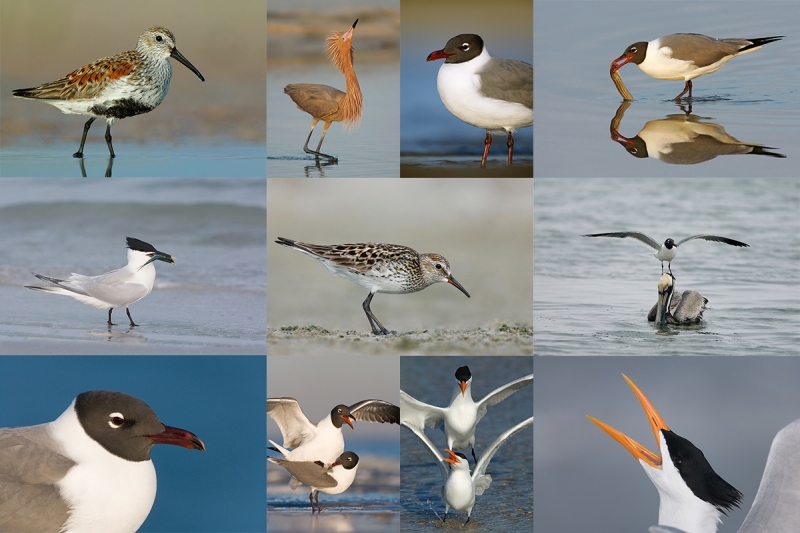
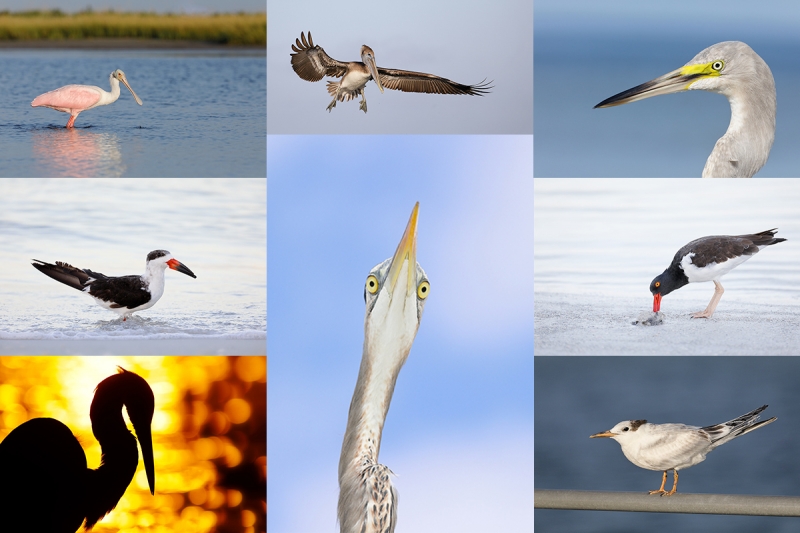













Number 1. The reflection with mirror image is the winner in my humble opinion.
#2 for me even though the crab could be sharper. The viewer is on the same level as the bird. There’s a story– the bird has already caught a crab, and is hunting for more–foot stepping, eyes riveted on the grasses. The background is all one piece, no other colors or lines or objects. Vertical fits the subject. I like behavior telling the story.
Yes, a sharper crab would have been nice. But more depth-of-field does not come without a price: a higher ISO, a slower shutter speed, and/or increased background details.
with love, a
All the images of many many birds are interesting and well made. Image #1 and #2 and #3 of Little Blue Heron are also interesting and well made.
Artie
I love #1 with the reflection in the water not a ripple. #3 is really sweet with great eye contact
BUT funny thing is there created on the 28th of Match…must be a New York long island thing 🙂
Always with love b
Robert,
Of course the dates match — the images were all taken on the same day!
with love, a
Artie
Got to love your sense of humor!
#3 is now Macch 🙂
Always with love b
Tanks and fixed again. I hope 🙂
with love, a